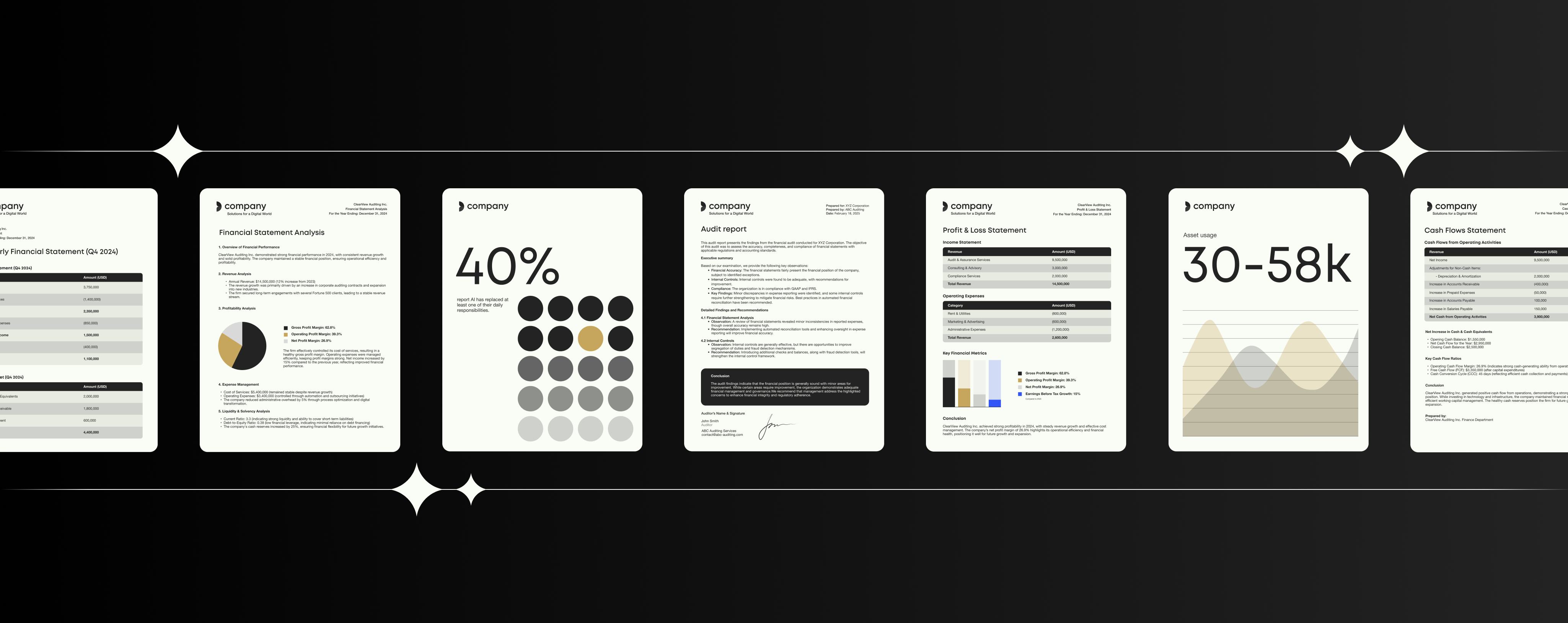Q&A with BDO: Fostering innovation through digital transformation

A look at BDO Canada’s digital transformation journey in partnership with Templafy.
We’ve explored the trend of digital transformation (DT) in financial services, and now we’re looking at it in real-time practice.
BDO (Binder Dijker Otte), a multinational financial services company, has prioritized building an ecosystem of innovation largely powered through DT. Paul Vetrone, Director of Audit Transformation and Innovation at BDO Canada, drives this activity by implementing strategic digital initiatives that enable business results.
In this conversation, we look at how BDO dealt with digital transformation (DT) changes, and touch on topics such as:
- The process behind getting a full team on board
- Integrating new tech tools into a tech stack
- Working around client expectations
- What’s ahead for DT in financial services
Tell us a little bit more about your role. How do you balance priorities?
I’m focused on transformation and innovation, which go hand in hand. The transformation part largely revolves around the digitization of our organization, moving away from paper and streamlining business practices. The innovation half looks at the future; how we want to be doing our business, and what future industry trends look like.
My role is a true balancing act. We’re seeing a lot of changes in the industry challenging companies to adapt rapidly. We want to innovate and move into the digital space, but at the same time, we need to keep our finger on the pulse of today’s regulatory environment.
Essentially, I’m figuring out how to make things run more efficiently today, planning for the future of the business while simultaneously keeping up with industry changes to identify the impact on today and tomorrow.
What initiatives have been top of mind for you in this role over the past year or so?
Evolving our document management strategy. The pandemic rapidly shifted the openness we saw from clients around digital initiatives. We saw more customers wanting to move into the digital realm, which meant we needed to analyze our own practices to position ourselves to meet new demand – and I knew this had to start with our content.
Documents are a huge part of what BDO does. The business is predicated on our ability to send deliverables and provide expertise on documents – from contracts to letters to working papers. We have a lot of great content, but historically it’s been fragmented across the business. We have 100+ offices in Canada alone, and content has been stored all over these locations, both digitally and physically. We needed to find a better process around content which is why we turned to Templafy.
How does Templafy help the BDO team do their jobs better and deliver value to customers?
Templafy has skyrocketed our levels of operational efficiency. The solution offers plentiful time savings because we’ve been able to centralize all our content. Employees know exactly where to go for the latest and greatest — within a few clicks they have the document they’re looking for and can get started.
We’ve also been able to automate certain parts of the content creation process, mostly around little things like formatting and grammar but also big things like regulatory considerations. We can automate those components through Templafy to ensure that individuals are being served the exact content they need based on their location. This feature not only cuts down on review times but also allows employees to spend more time on value-added work for customers.
“Templafy has skyrocketed our levels of operational efficiency. The solution offers plentiful time savings because we’ve been able to centralize all our content. Employees know exactly where to go for the latest and greatest — within a few clicks they have the document they’re looking for and can get started.”

Paul Vetrone
Director of Audit Transformation and Innovation at BDO Canada
What did the Templafy implementation process look like? Were there challenges to getting people on board during this change management process?
We started by piloting software with a few stakeholders whose day-to-day would be influenced by the platform. This allowed us to start to build internal champions for Templafy, who were essential to evangelizing the solution across the organization. They help us answer the “what’s in it for me?” question.
For example, our marketing team creates a ton of excellent content but getting that information out tends to be a bit of a challenge when teams are siloed. Templafy broke down these barriers and immediately showcased to marketing the content they created was now going to be easily accessible to everyone. Once you’re able to set that “what’s in it for me?” sales pitch, change management becomes much easier. That’s essentially the nexus of digital transformation, to have it stick, you must focus on the outcomes.
What future trends do you expect to drive the digital transformation process?
Compliance. Regulators across the globe are focusing more on audit quality which means we must be more on top of things than ever before. Accountants and auditors are held to a very high standard, and compliance failures can be incredibly problematic. I’m focused on making sure we have the solutions in place, like Templafy, that will allow our staff to maintain high levels of audit quality and compliance.
We’re also looking at the diversification of service offerings and bringing them online. More clients are open to moving into a fully digital world which means we need a tech stack that will empower us to do this work.
Any advice for businesses having trouble starting their own digital transformation journey?
Often people run into issues by trying to solve too big of a problem. You can’t check off “digital transformation” overnight. Instead, start by identifying a few key smaller initiatives that can provide a high impact early on. For example, we implemented a global portal that allowed us to share documents securely with clients, and then took the next step to implement digital signatures.
Starting by breaking things down into foundational blocks that you can build upon is the easiest way to implement a digital transformation program that will last.
For more insights from Paul and the BDO team, check out our webinar: How BDO Canada is digitally transforming its business.



